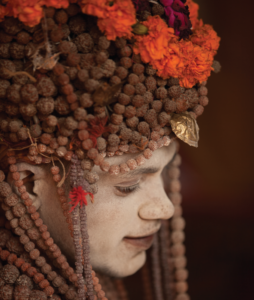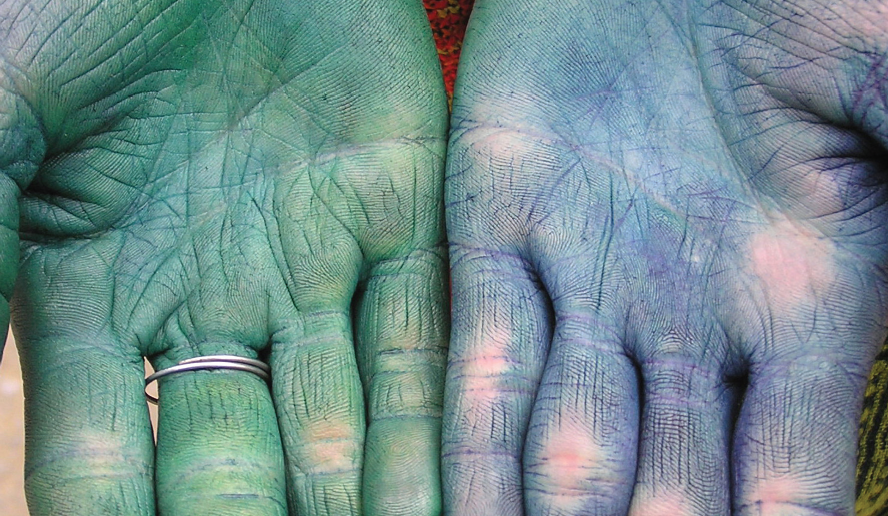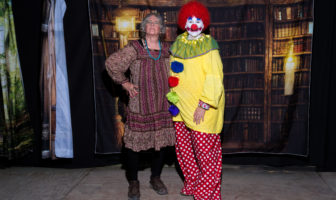Photographer Greg Davis embarks on a spiritual journey to Kumbh Mela.
By Leo B. Carter; Photos Courtesy of Greg Davis.


“I grew up in the small town of Livingston in East Texas,” Davis begins. “In high school, I was the newspaper photographer. But there was no reason to think I would be here at this point based on that.”
Davis passed on the family business and went to Baylor University’s business school at the request of his father. For a decade, Davis worked a desk job at a variety of tech companies. And then, his life was flipped upside down.
“I went through the valley of darkness to get here,” Davis says.
Within the first five months of 2000, he lost four very close people in his life, including his father and a cousin, to illness and tragic accidents.
“Then round two came: drinking, flipping my car three times, a gang attack, a broken heart, that sort of stuff. I quit my job, quit drinking, sold everything I owned, packed up and took off with a $400 point-and-shoot.”


“It was a fleeting moment,” Davis says of the shot that started his life as a photographer. “I had no idea what I’d captured. There’s something in that image that shifted everything. I like to say that my life is now weaved with this woman’s. It changed the course of my life, as well as the many other people who are drawn to this image. I do know that I have a purpose now. The purpose is to form a connection and to remind us all that we are a part of something greater than ourselves.”
As the winner of Best in Show at the outdoor festival of the Museum of the Southwest in Midland, Davis was invited to have a solo exhibition with the museum’s 2013 contemporary artists series entitled Myths and Legends. He decided, without hesitation, to travel to and shoot the largest religious pilgrimage in human history, the Kumbh Mela, at the confluence of three great rivers in Northeastern India. Davis and an assistant spent 18 days in a tent on the banks of the river, only two of the 100 million pilgrims who traveled to this sacred place during the five-week period that occurs once every 12 years.
“Their belief is that they make it [to Kumbh Mela]to drink the water, the nectar of immortality, and they break the cycle of reincarnation and their souls go to heaven.”
The duo dealt with flooding, fluctuating temperatures and exhaustion during their journey. Davis did not go to capture the vastness of this event, however. His mission was to tell the story of the individuals who travel far and sacrifice so much to be there. His was a pilgrimage to connect a vastly different world with his own.
“For me, the story of Kumbh Mela is about the individual pilgrim that comes,” he says.


Looking at the photos, one can’t help but feel caught up in a deeply personal moment with a complete stranger. A tacit exchange takes place. In a quintessential image, an old bearded man drinks from the river, the nectar of the gods, or “Amrita.”
“I’d like people to see themselves reflected in the darks of his eyes,” Davis hopes.
The photographer catches the abstracted reflection of himself in the old man’s irises, easily mistakable by a viewer for his or her own image reflected back. The viewer and subject are mirrors of one another. The old man’s stare is transfixing and unshakable, and will follow you across the room. He is in the act of transcending the earthly realm and invites you to take part.
“There’s an energy that’s transferred and a collaborative process between me and these subjects. As the viewer, you continue that collaboration. There’s awe in these images,” Davis explains. “That’s why I do this, the viewers. I really get off to people’s responses to these images.
“These subjects’ purpose is to connect with something greater than themselves,” Davis feels, and it is this purpose that forms the unbreakable bond connecting him with his subjects and subsequently, the viewers in the gallery. Davis and each of the pilgrims arrived at Kumbh Mela for different reasons. Some enter the waters without hesitation or doubt to complete themselves spiritually, some come to satisfy a curiosity, yet others do so to walk in the footsteps of their predecessors. They are all, however, reaching outward—across time, distance, even beyond the bounds of the static image—for the same goal: to forge a connection.





